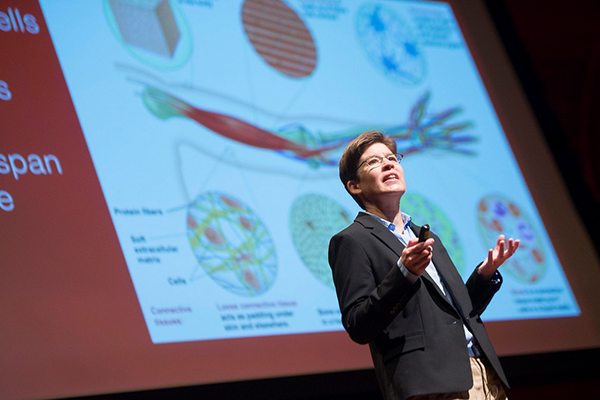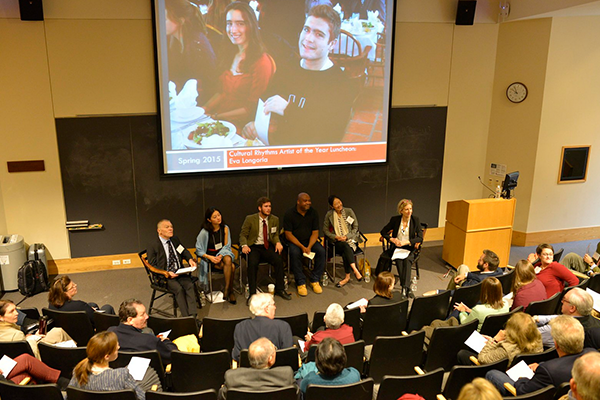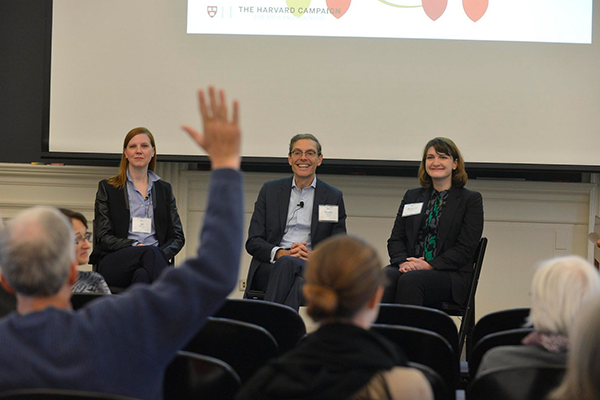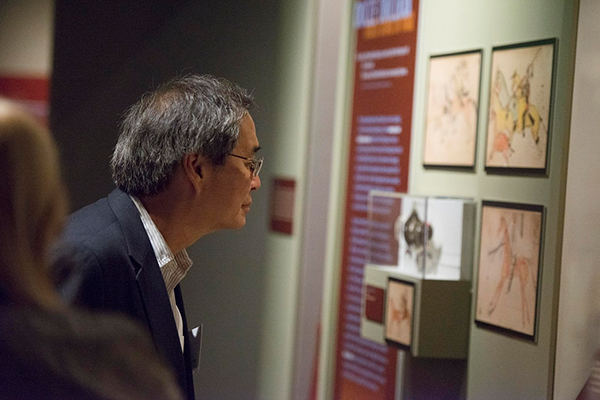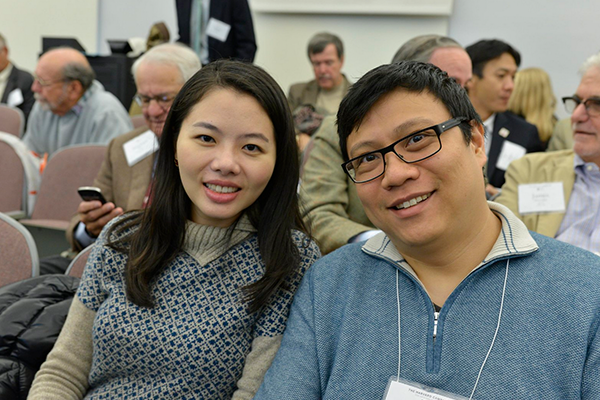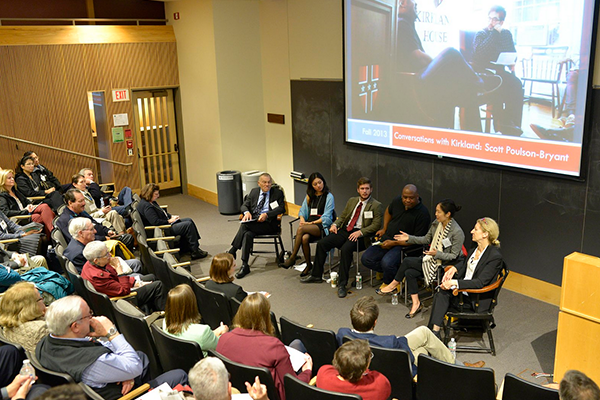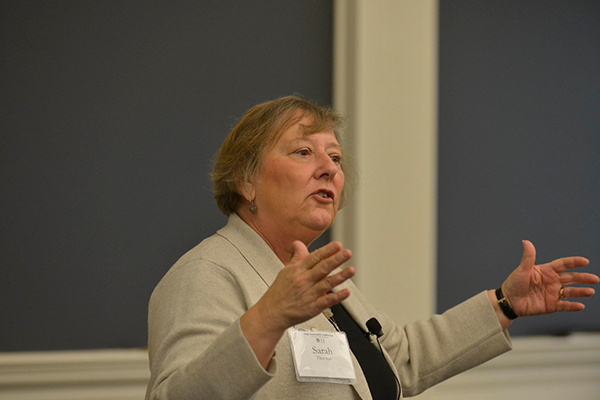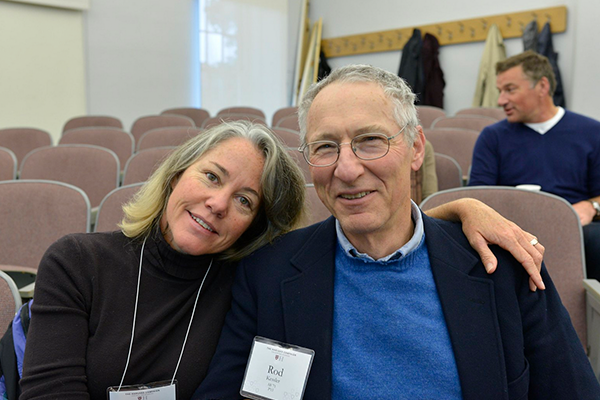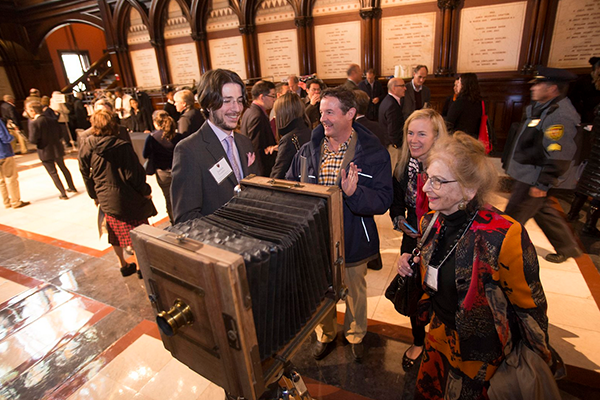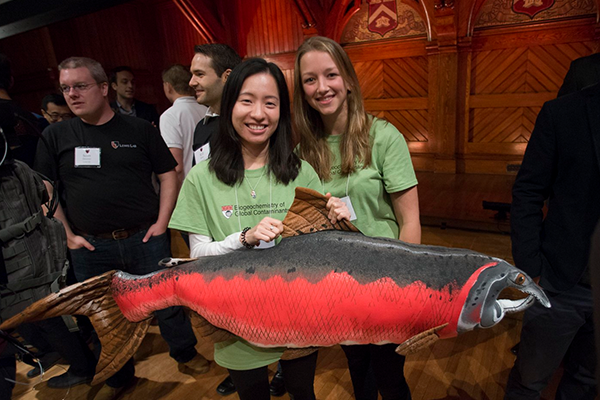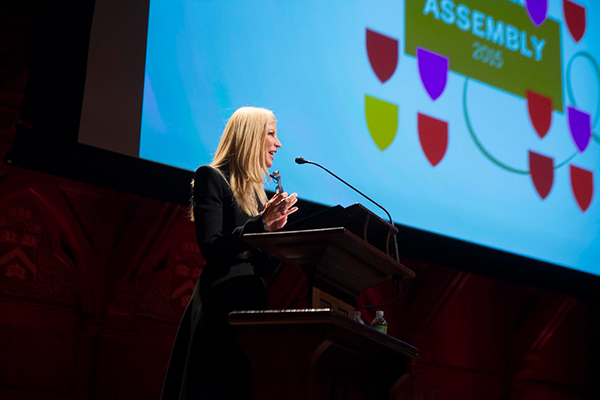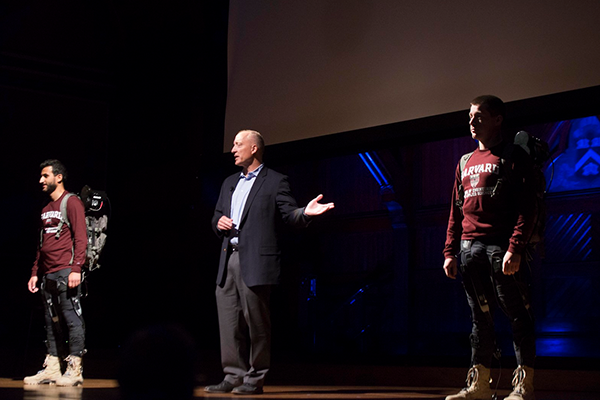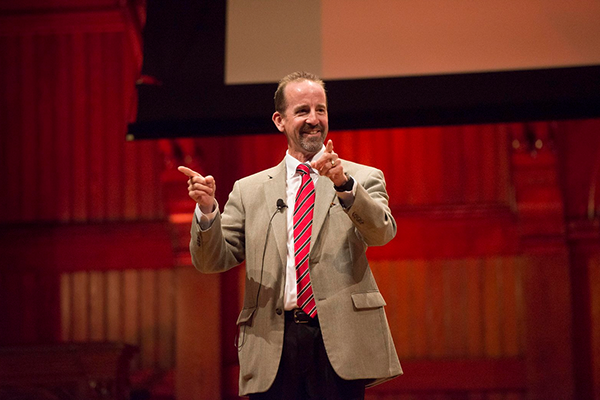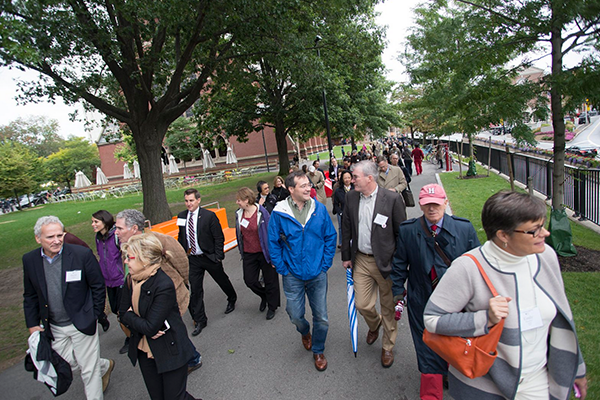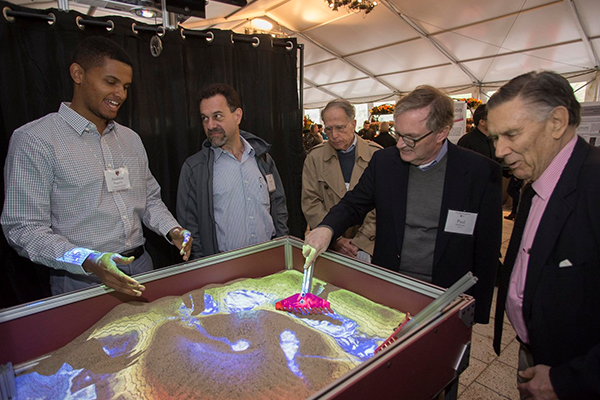Sanders Theatre was abuzz with research that will change lives: wearable robots, living tissue created from 3D printers, building blocks for an artificial pancreas, an injectable cancer vaccine under clinical trials. And these are only a sample of the kinds of inventions incubating at the Harvard John A. Paulson School of Engineering and Applied Sciences.
What helps to drive this kind of unprecedented discovery at Harvard? You do, said Michael D. Smith, Edgerley Family Dean of the Faculty of Arts and Sciences, to an audience of more than 650 alumni, parents, and friends attending Assembly 2015, held in Cambridge on Saturday, October 3.
“This morning, we’re going to experience a bit of the future, and that future is taking place right here,” said Smith, who invited faculty to the stage to share their collaborations as part of the event’s plenary session. The School, Smith said, is igniting a blaze of innovation—and donors are crucial partners in its progress.
New ways of thinking at Harvard
A perennial fall tradition, Assembly invites volunteers for the Harvard College Fund (HCF) and The Harvard Campaign for Arts and Sciences back to campus to celebrate past achievements, reconnect as a community, and prepare for a new year of fundraising on behalf of the Faculty of Arts and Sciences (FAS).
For Assembly 2015, attendees began the day in classrooms, labs, and museums, choosing from seven symposia that explored how Harvard is defining scholarship and education for the 21st century. Highlights included a show of the treasures that can be found in Harvard’s vast museum collections, an illustration of the expansive digital reach of the Harvard libraries, a discussion on how the Houses foster risk taking and discovery, a look at the newest concentration at Harvard, Theater, Dance & Media, and much more.
A community behind the Campaign
Donor generosity and support of the Campaign directly impact Harvard’s ability to provide these foundational experiences, said FAS Campaign Co-Chair Sandy Edgerley ’84, MBA ’89, P’19, ’17, ’16.
“We are transforming the undergraduate experience through the Houses, changing how our students live and the ways in which they learn,” Edgerley said as part of her Campaign update. “We are reinventing the future of engineering. We are solidifying our commitment to make sure that a Harvard education is within reach of every extraordinary student. And we are providing resources to seed new initiatives and ideas that will fuel the discoveries of the future.”
“The Campaign has inspired thousands of volunteers and tens of thousands of donors,” she said, noting that more than half of College alumni have been inspired to give to the Campaign and have helped Harvard raise $2.2 billion through 180,000 gifts.
At Harvard, surprises happen all the time
An augmented reality sandbox, 3D printers, and new medical treatment devices were all on the menu at a surprise “pop-up” fair at the concluding Assembly luncheon.
Attendees were treated to interactive exhibits of the research under way in the Active Learning Lab at the Harvard Paulson School. Students shared projects that challenge perception using visual computing models, plastic replicas of brains and hearts created through 3D printers, and circuits that can be produced quickly to facilitate greater, and less costly, experimentation.
The new Rome
In his closing address, Dean Smith said that this is the kind of invention, innovation, and creativity that made Rome the place that altered everything. Like Rome, Harvard is fundamentally changing the way we think, he said. “You, too, can be part of this exciting future.”
